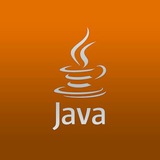tg-me.com/java_codings/75
Last Update:
55. Matrix Multiplication.
import java.util.Scanner;
class MatrixMultiplication
{
public static void main(String args[])
{
int m, n, p, q, sum = 0, c, d, k;
Scanner in = new Scanner(System.in);
System.out.println("Enter the number of rows and columns of first matrix");
m = in.nextInt();
n = in.nextInt();
int first[][] = new int[m][n];
System.out.println("Enter the elements of first matrix");
for (c = 0; c < m; c++)
{
for (d = 0; d < n; d++)
{
first[c][d] = in.nextInt();
}
}
System.out.println("Enter the number of rows and columns of second matrix");
p = in.nextInt();
q = in.nextInt();
if (n != p)
System.out.println("Matrices with entered orders can't be multiplied with each other.");
else
{
int second[][] = new int[p][q];
int multiply[][] = new int[m][q];
System.out.println("Enter the elements of second matrix");
for (c = 0; c < p; c++)
{
for (d = 0; d < q; d++)
{
second[c][d] = in.nextInt();
}
}
for (c = 0; c < m; c++)
{
for (d = 0; d < q; d++)
{
for (k = 0; k < p; k++)
{
sum = sum + first[c][k] * second[k][d];
}
multiply[c][d] = sum;
sum = 0;
}
}
System.out.println("Product of entered matrices:-");
for (c = 0; c < m; c++)
{
for (d = 0; d < q; d++)
{
System.out.print(multiply[c][d] + "\t");
}
System.out.print("\n");
}
}
}
}
@java_codings
BY Advance Java 👨💻
Warning: Undefined variable $i in /var/www/tg-me/post.php on line 283
Share with your friend now:
tg-me.com/java_codings/75
